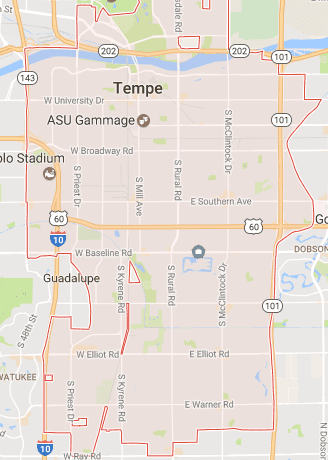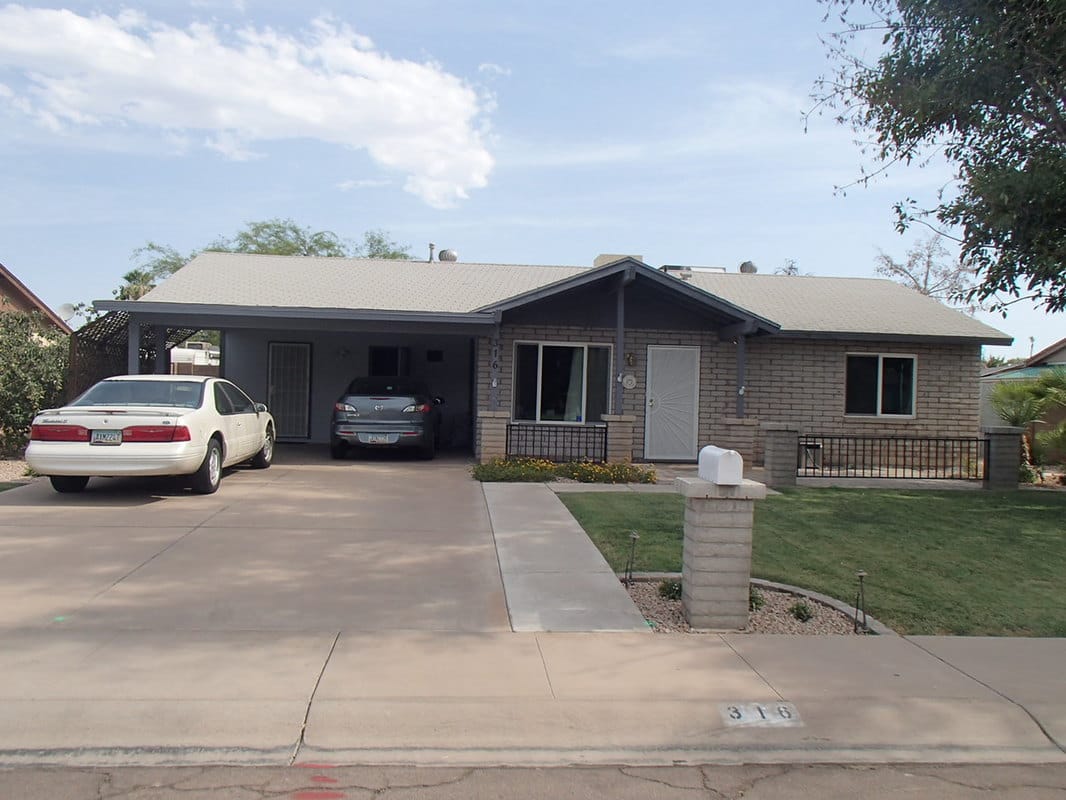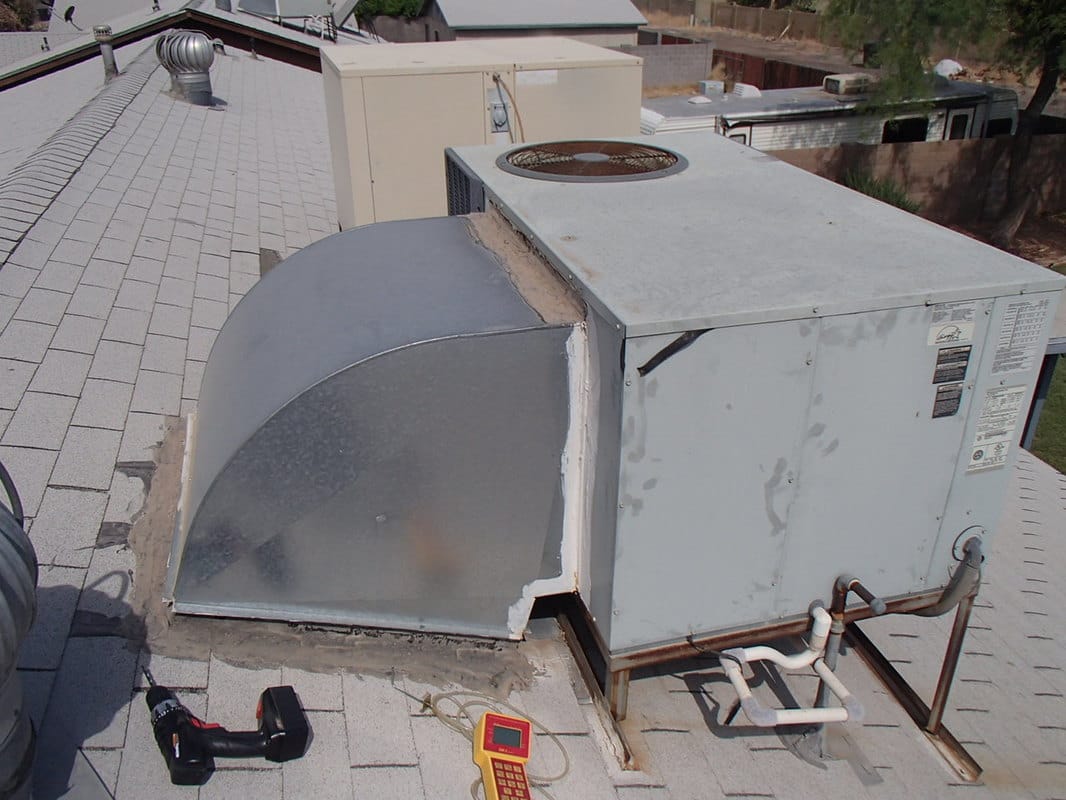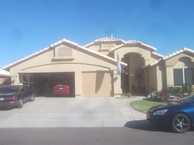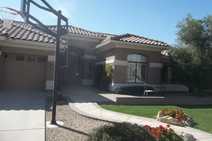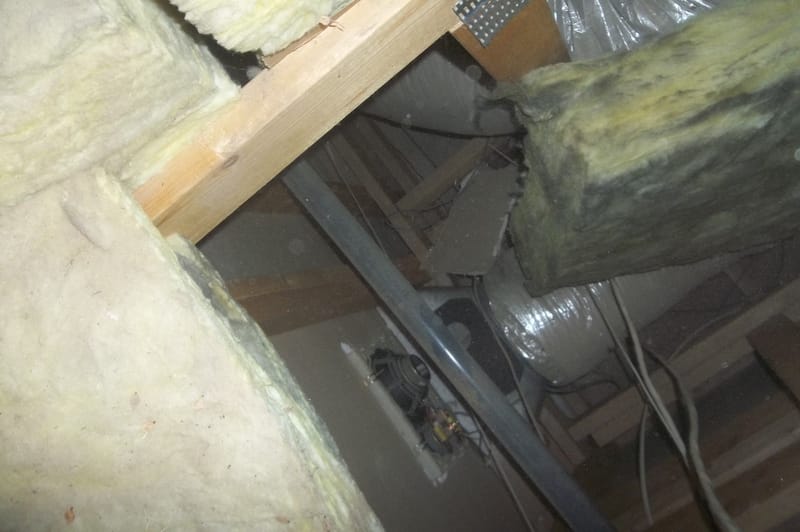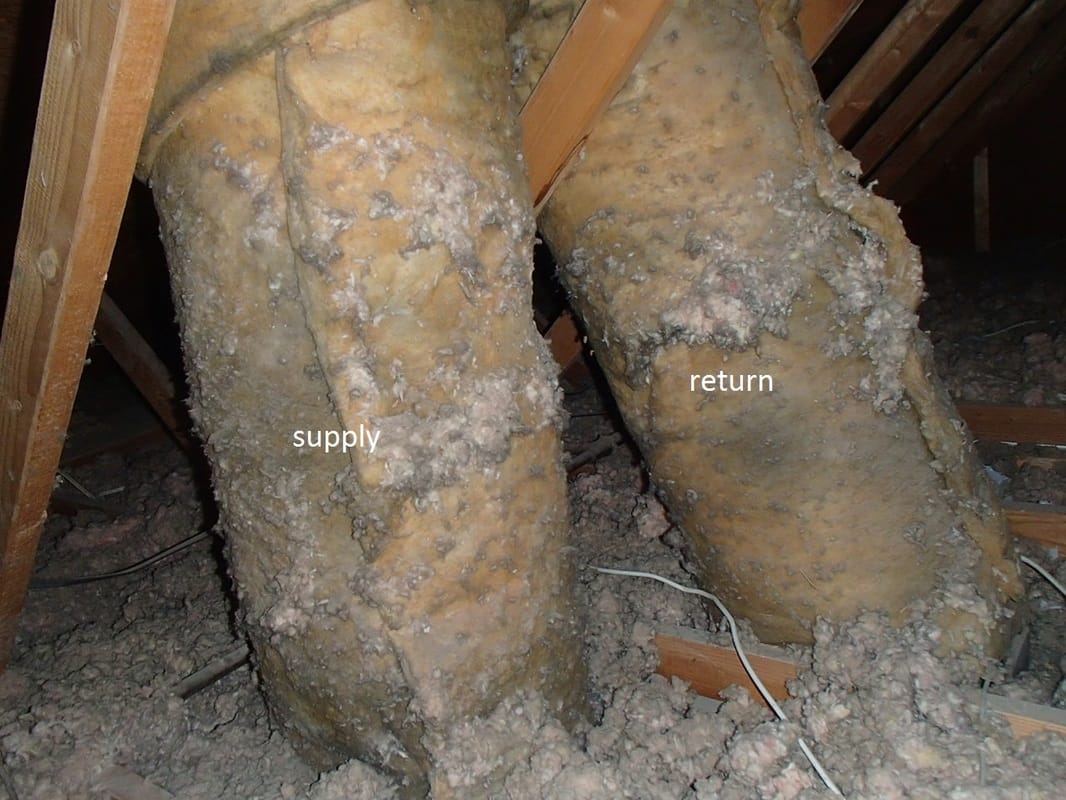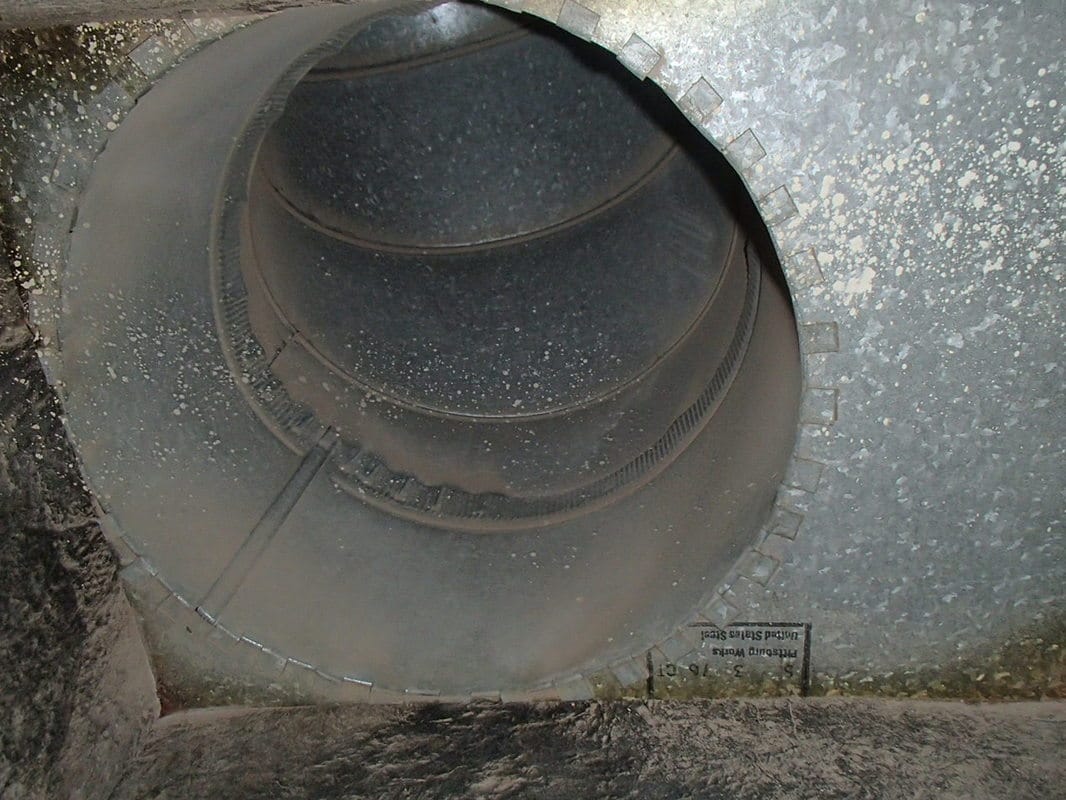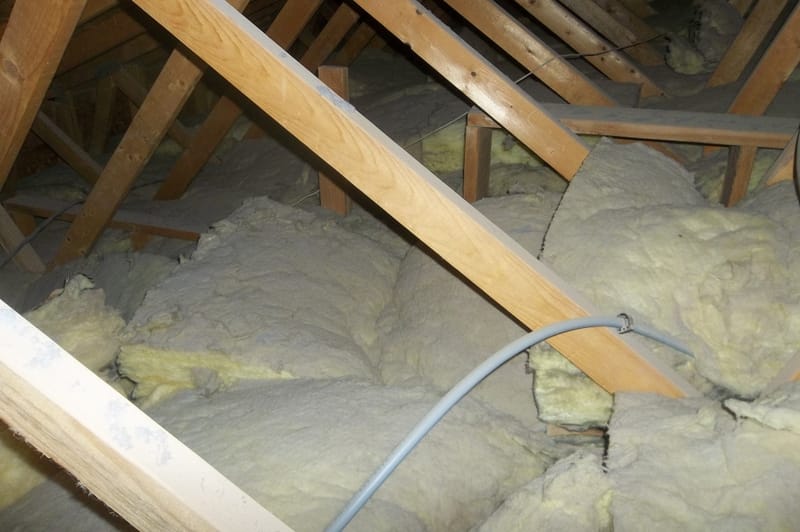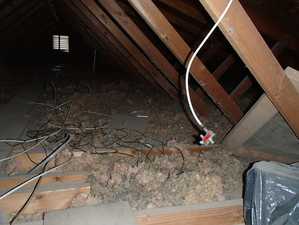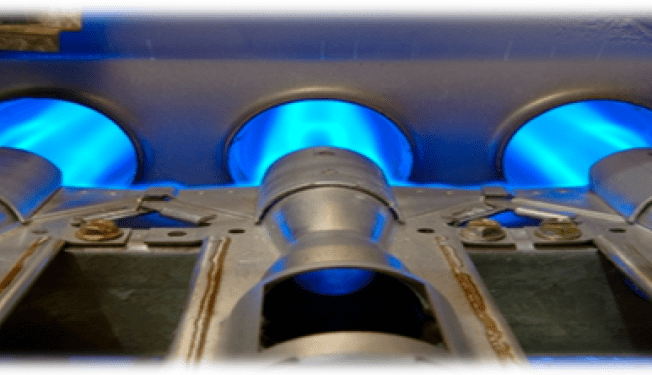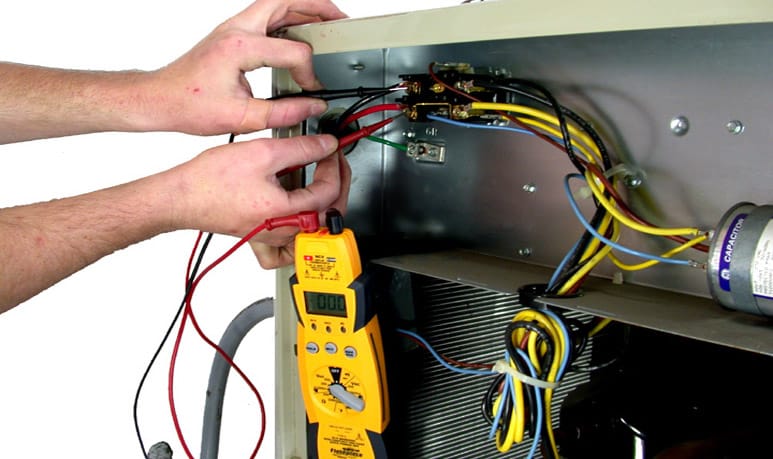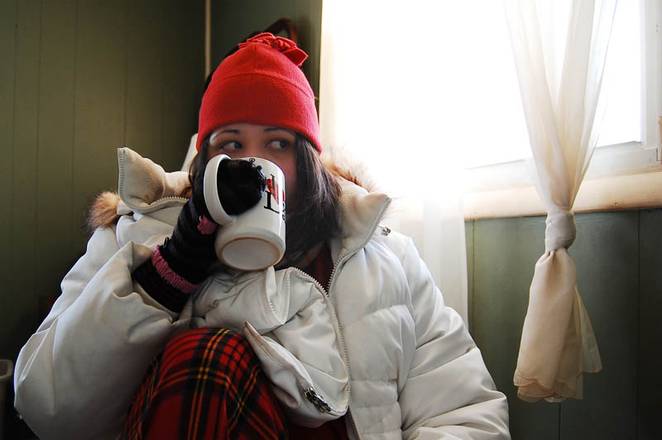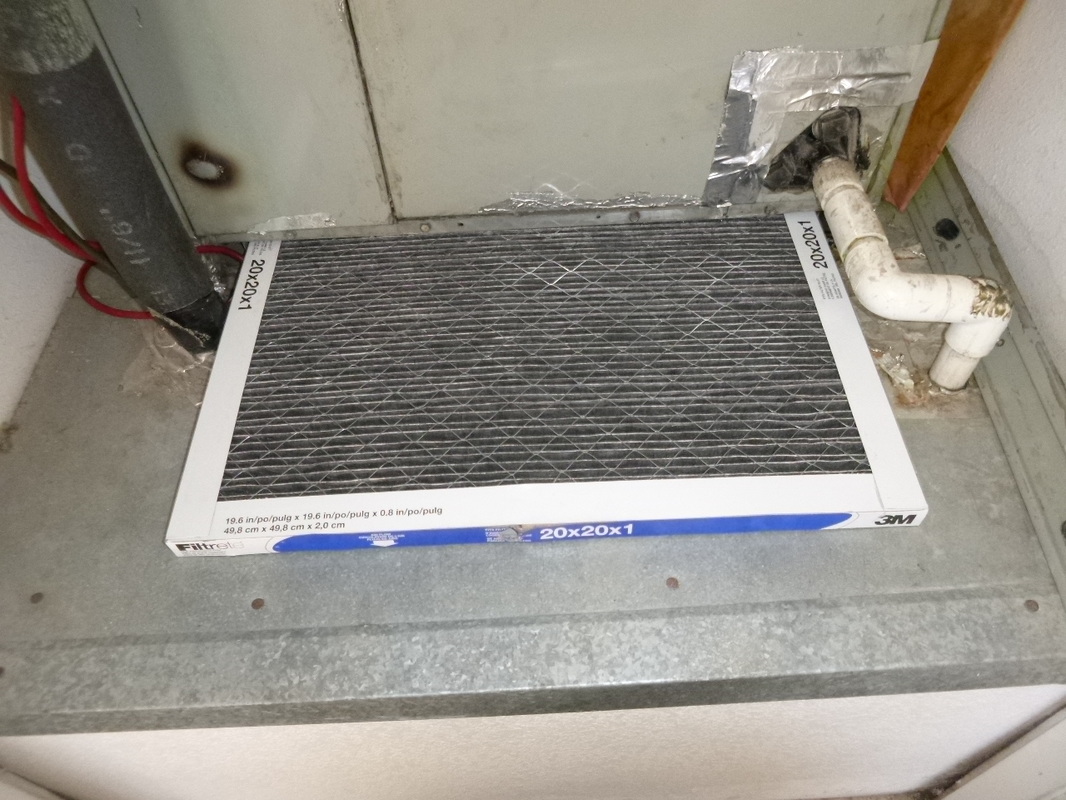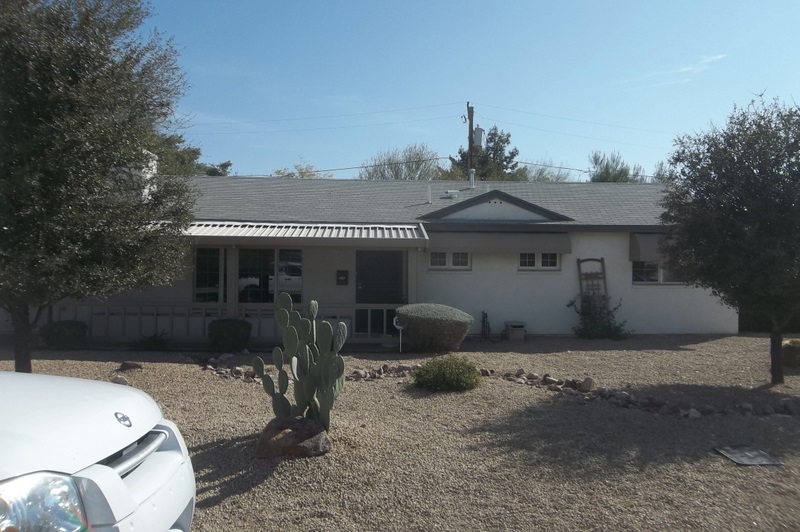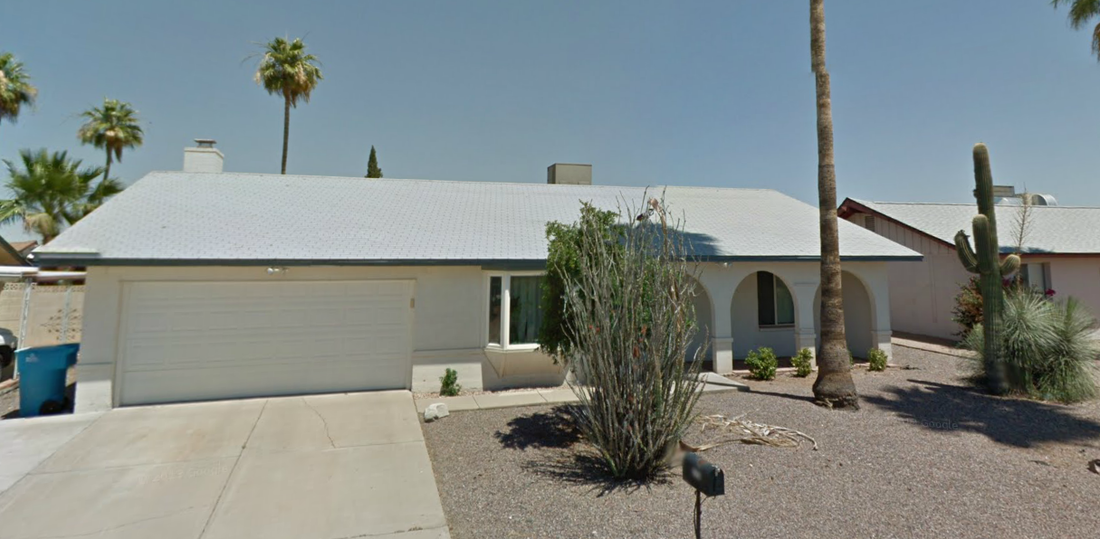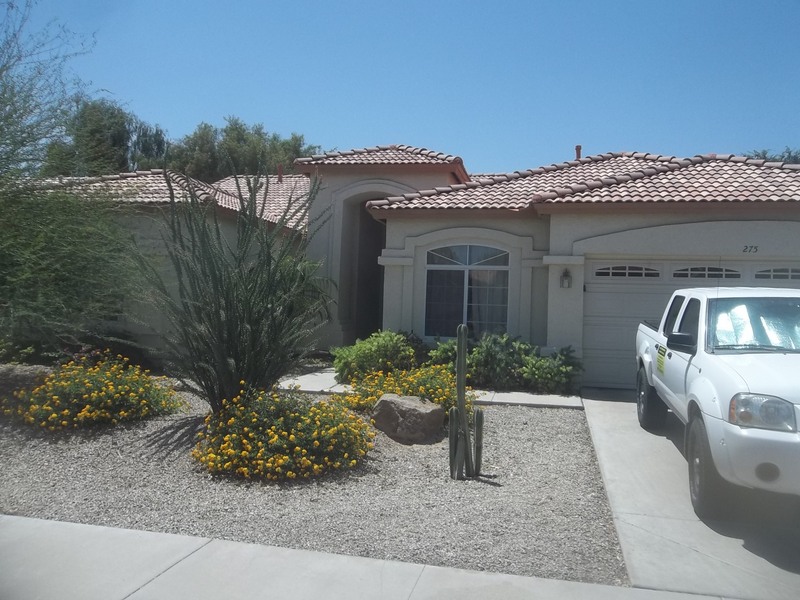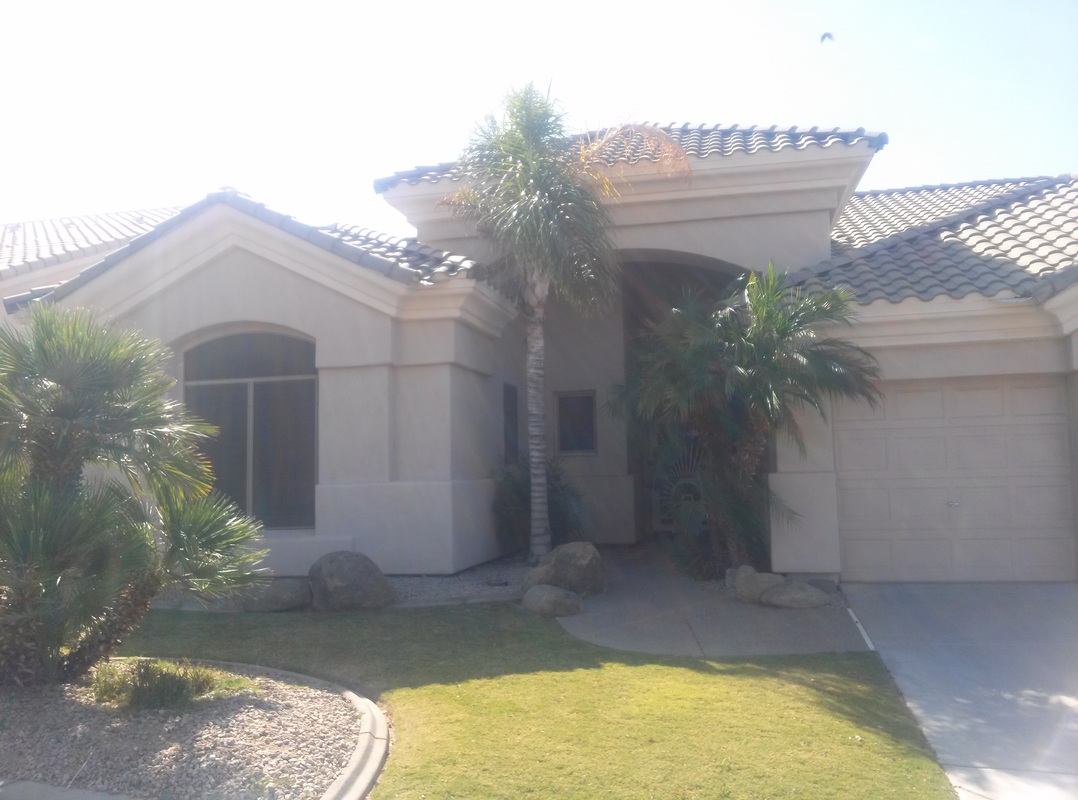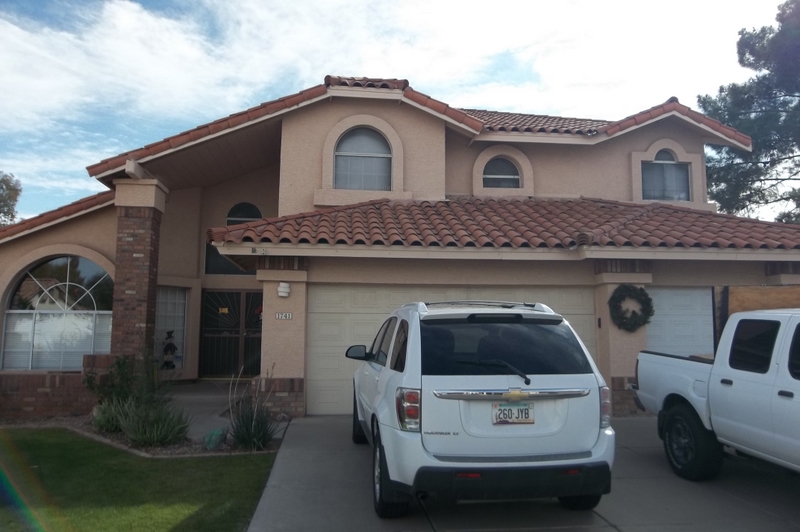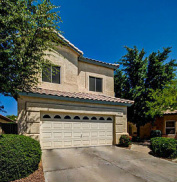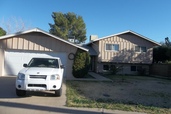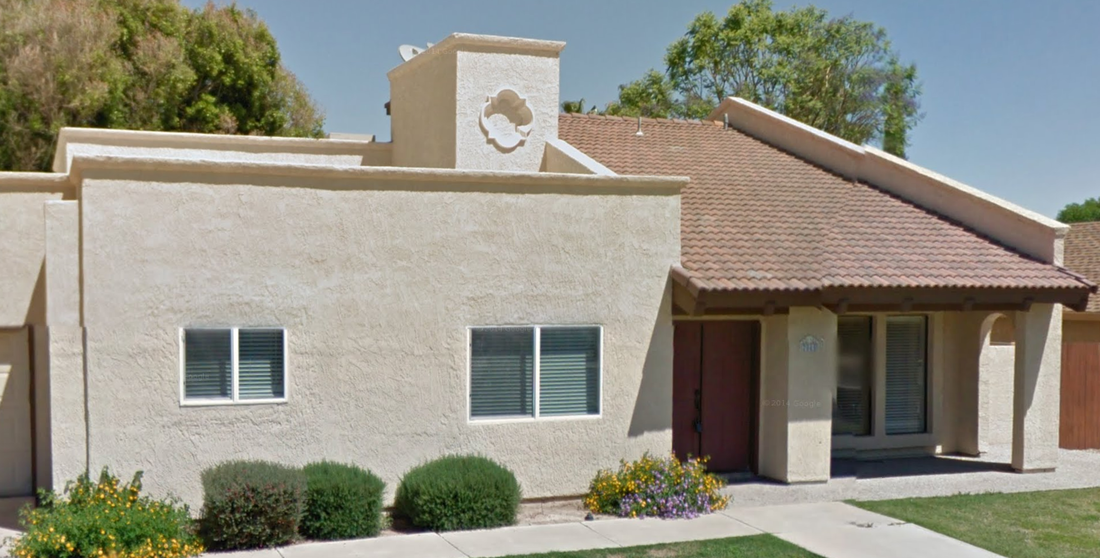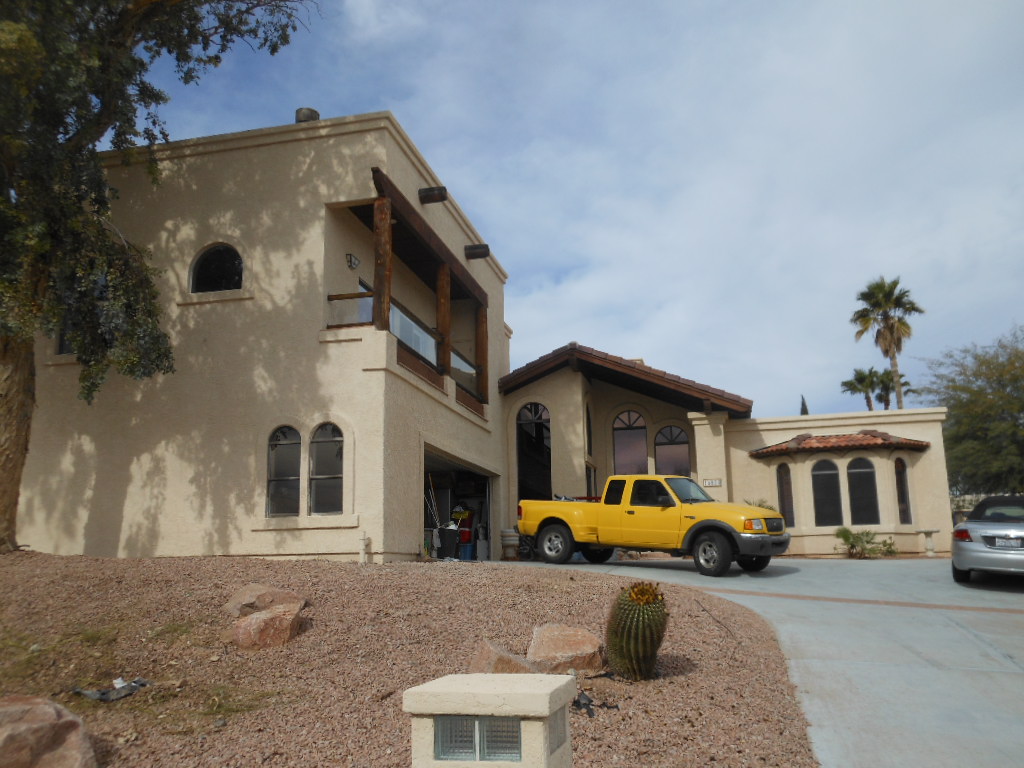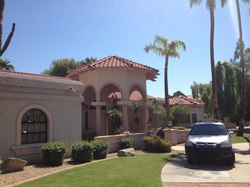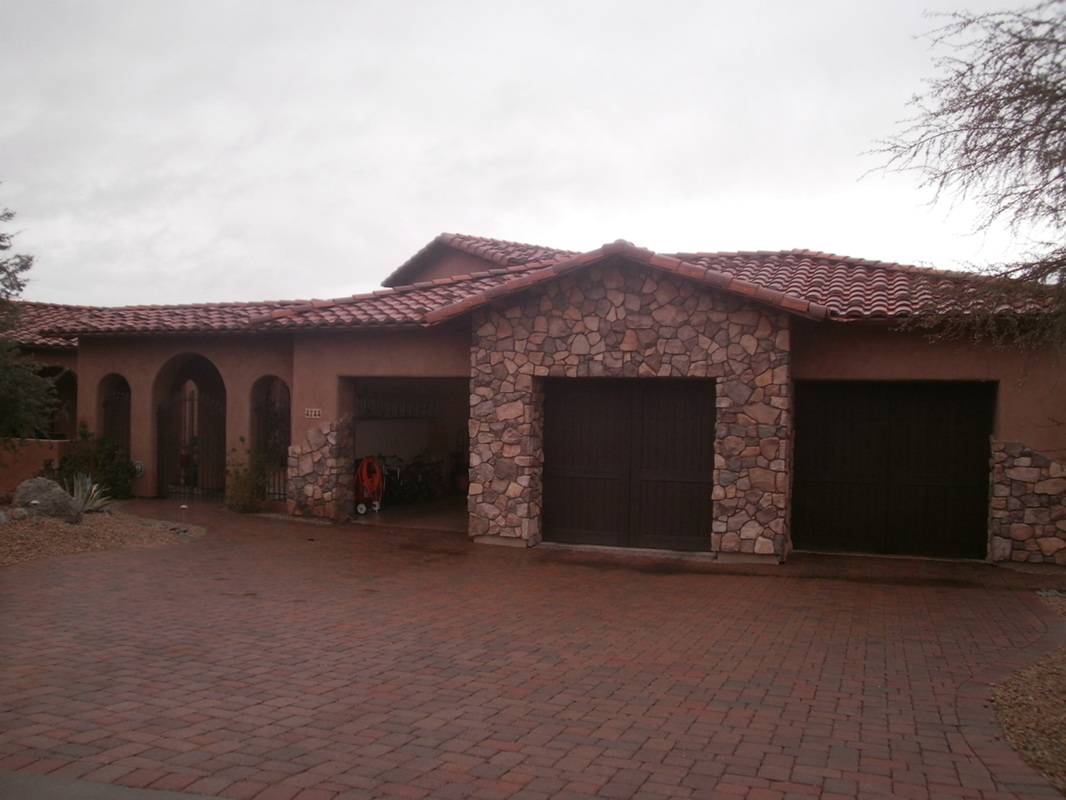Heating Repair Problems For North Tempe HomesHomes in the 85281 zip code are historic Tempe homes, built in the 1950’s and 1960’s. Tempe homes in the nearby 85282 zip code were built in the 1960’s to 1980’s. These Tempe homes are mostly ranch style homes with long roof lines and a heat pump package unit on the roof with a metal elbow. Some Tempe homes have or used to have dedicated closets for furnace heaters or air handlers with the return grille under the door. The main ductwork is a metal trunk that runs down the middle of the hallway with 7 foot ceilings and registers located above the bedroom doors. In these Tempe homes, the heating systems go bad not because the units are old, but because the components around the heating system are bad. The components that deliver the air, the ductwork, is very important to how the heating system works. Think of driving a Prius with a hole in the gas tank… that’s what is happening to homes all over Tempe when heating and cooling systems are installed on a home with leaky ductwork, low insulation and ductwork sized for a smaller unit. Heating Problems and Repair Solutions For Heat Pumps and Furnaces For South Tempe HomesHomes in the 85283 and 85284 zip code were built anywhere from 1980 to the early 2000’s. The variety of homes in south Tempe varies from the standard spec home where homeowners had 4-5 models to choose from and the builder’s mission was not to build quality homes but to make a profit and use the cheapest materials and fastest methods to slap homes together. From the insulation, to the number of returns in the home, these things all cause Tempe homeowners to have high energy bills and uncomfortable rooms. About half of the homes south of the US60 Highway were insulated with fiberglass batts. (Learn why we think fiberglass batts in Arizona should be outlawed here.) In these Tempe homes your heating and air conditioner is likely working twice as hard as it should be just because the insulation was installed incorrectly. A more common HVAC contractor mistake that more than 90% of the homes in south Tempe suffer from is what we call the "flex duct flaw". Do you have one room that just doesn’t stay the same temperature as the rest of the house, or gets hot in the summer and cold in the winter? Does that room happen to be the room that’s furthest away from the air handler in the attic? When HVAC companies started switching from all sheet metal ductwork to using flex duct in the 1980’s and 1990’s, it meant that heating and air conditioning installers needed much less still to install, so labor became cheaper and jobs were completed much faster than before, which was good for the HVAC contractors. The flip side of installing flex ductwork in homes is that it is so easy to install, almost anyone can do it, so the best practices for airflow and air balancing became non-existent. If you go up in your attic you are likely to find at least 4-5 wye branches where the flex duct reduces in size and splits. Every wye branch adds an equivalent length of 15 extra feet of ductwork your heating and air conditioner needs to deal with. If your unit is already stressed from low insulation and leaky ductwork, having another 60 feet of ductwork in the attic can spell a recipe for a shortened heating and air conditioner life and high energy bills. Tempe Heating Repair Contractors Won’t Talk About These Permanent SolutionsIf heating and cooling contractors would only take a whole home approach to installing heating and air conditioning systems, their units would operate 10 times better. How do we know? We have measured and seen the effects of addressing the whole home on a heating and air conditioning system… the electrical usages (amps) decreases, the airflow (CFM50) increases, and the utility bills go down. Addressing home performance issues should be done by every heating and air conditioning company during heating repairs, service and installation. No heating company in Tempe should be talking about HVAC without addressing a complete home performance picture. Do you know it’s rare for a heating contractor in Tempe to go into the attic at all during a maintenance inspection, heater tune up, or a heating service call? Heating contractors need to focus more on the whole-home and less on the bells and whistles of heating systems like UV lights and washable filters (the scams of the HVAC industry). If the ductwork was sealed like it should be, homes wouldn’t be half as dusty and the need for a UV light would completely go away! Symptoms of a Broken Heater in Tempe Have you experienced these common symptoms this winter?
All these heating problems are likely caused not from the age of the system or its components, but something outside of the unit itself. What Causes Heater Problems Around Tempe Homes?Common heater problems in Tempe are listed below:
What causes the most heating problems in Tempe homes? The answer is not the heating units themselves, it’s the other components of the home that cause the heating system to work much harder than it should. Fix those, and you’ll have a system that operates much more efficiently, quietly and less troublesome during the heating season. Sign Up For Our Newsletters & Receive 15% Off Your Next HVAC Repair or Installation
1 Comment
Your heating system should keep you warm and comfortable throughout the winter season, but he excessive summer of your HVAC system may cause fatigue of the heating components and whether you are proactively tackling heating maintenance or find yourself coming home to a broken heating system, here are some early warning signs and symptoms you can look out for to keep your heater running smoothly and save money on your utility bills. Common Symptoms of a Broken Heater Furnaces and heat pumps are fairly complex machines of electrical and mechanical parts and heating systems can have one independent component fail or multiple shut downs at once. Diagnosing a broken heating system starts by listening to its initial symptoms. Whether you have a gas powered furnace or gas pack or an all-electric heat pump heater, here are the common symptoms you might find if you suddenly experience your heater not working.
Common Symptoms the Heater Has A Slower Chronic Problem That Can Be Proactively Addressed Often our technicians will catch emerging problems before they turn into bigger and more expensive issues, some of the symptoms of an overworked heating system are:
Air Conditioners and Heaters In Arizona Can Have These Problems If You Notice The Heater Is Not Working Heating and air conditioning repairs in Arizona homes stem from several common problems.
If you are looking for heating and air conditioning repair contractors in the Phoenix area chances are you need fast service to get your system working again. For fast, reliable service call Green ID 24/7 at 602-926-1650. Our technicians are trained to never over-sell repairs, in most cases a quick repair is all that’s required to get the system back in working condition. Mention this blog for a 10% discount off any repairs and call (602) 926-1650 today.
Yikes! If you suddenly notice the unpleasant surprise of your cold air coming out of your vents, several things may be happening to your heater to cause this strange phenomenon all centered on a “RESTRICTION” theme. First, shut your heater and fan to the off position on your thermostat, because if your vents are blowing hot air, continuing to run your heater will only continue the problem. This post will explain what causes cold air to come out of the vents when you have your heater on, when warm air should be coming out instead.
Where do restrictions come from?
|
Sign Up For Your Home Energy AuditFIND YOUR HOME TYPERanch HomesSingle Story, Spec HomesTwo Story, Spec HomesTri-Level HomesPre-1990 Custom HomePost-1990 Custom HomeDon't See Your Home? Find Your City Below!Archives
April 2024
Copyright Notice©2009 – 2023
All Rights Reserved |


